Key Knowledge Points of Chapter One:
Understand the characteristics, classification, development, and application of embedded systems, and familiarize yourself with the logical composition of embedded systems.
Understand the main types of embedded processing chips, familiarize yourself with the SoC development process, and understand the significance of IP cores.
Familiarize yourself with the encoding of Chinese and Western characters, the types of digital text and processing, and master the parameters, file formats, and main applications of digital images.
Understand the classification and composition of computer networks, familiarize yourself with the main content of the IP protocol, and master the composition of the internet and commonly used access technologies.
1. Logical Composition of Embedded Systems
Like general-purpose computers, embedded systems consist of hardware and software.
The main hardware components are the central processing unit and memory, which connect to the outside world through input/output (I/O) interfaces and devices, and are interconnected via buses. Together with embedded software, these hardware components form a complete embedded system, as shown in the figure below.
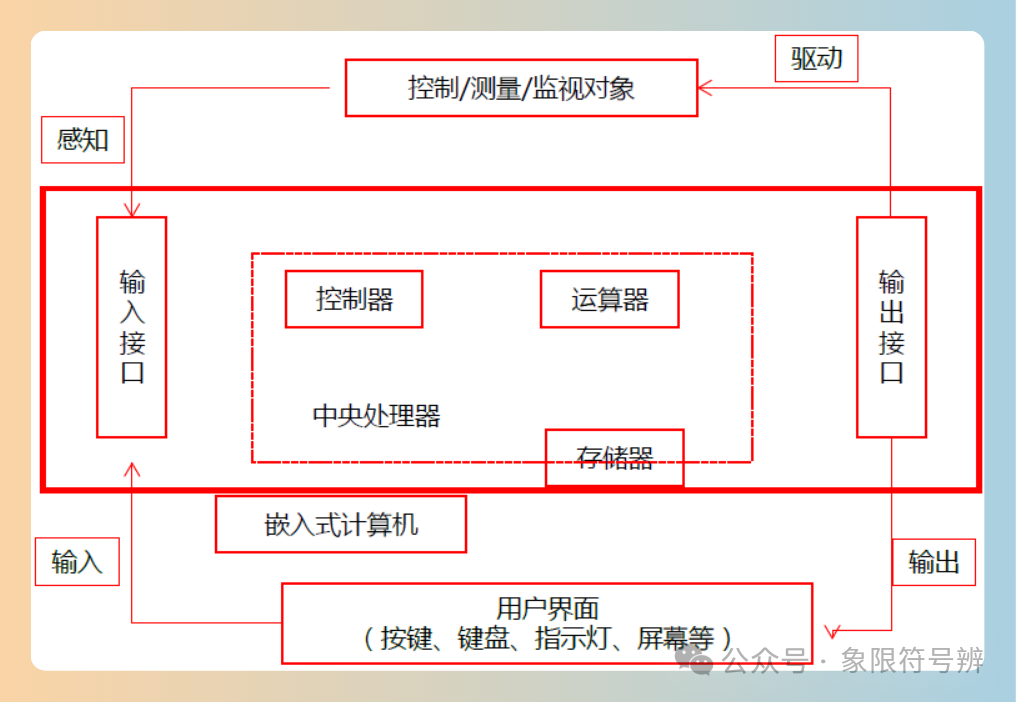
1. Processor
The component that can quickly perform arithmetic and logical operations on binary data according to instructions is called the “processor”. It consists of arithmetic units, controllers, registers, and cache, among other components, making the structure quite complex.
The emergence of large-scale integrated circuits has made it possible to manufacture all components of the processor on a semiconductor chip only a few cm² in size.
Classification of Processors in Embedded Systems:
• Central Processing Unit (CPU): The main processor responsible for running system software and application software. • Coprocessors: Digital Signal Processors (DSP), graphics processors, communication processors. Characteristics of Central Processing Unit (CPU):
• Word Length: Refers to the width of the binary in the general registers and fixed-point arithmetic units of the CPU. • CPU Word Length: 4-bit, 8-bit, 16-bit, 32-bit, and 64-bit (64-bit is predominant in general-purpose computers). • CPU Performance: Reflected in the speed of program (instruction) execution. Factors Affecting Program (Instruction) Execution Speed:
• Main frequency, instruction system, capacity and structure of the cache, and logical structure.
2. Memory
Task of Memory: Store programs and data.
Classification of Memory: Volatile memory and non-volatile memory, mainly including the following figure:
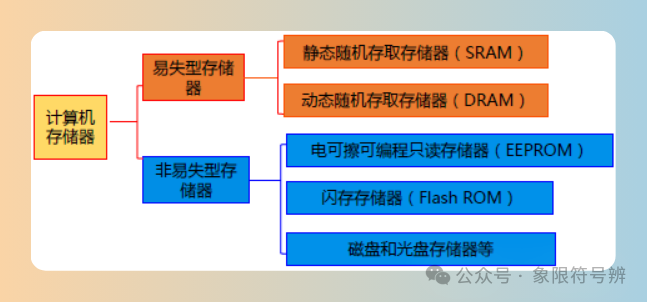
Note:
Non-volatile memory comes in various types. Previously, Mask ROM and EEPROM were commonly used; nowadays, Flash Memory is widely used.
3. I/O Devices and I/O Interfaces
-
• I/O Devices
The input/output devices of embedded systems are diverse and can be divided into two main categories based on their service objects:
Devices for Human-Machine Interaction: Such as buttons, keyboards, touchpads, touch screens, mice, joysticks, styluses, microphones, light-emitting diodes (LED), liquid crystal displays (LCD), printers, etc. These are the hardware components of the user interface.
Devices for Machine-Machine Interaction: Including various types of sensors (pressure sensors, temperature and humidity sensors, weight sensors, motion sensors, distance sensors, light sensors, infrared sensors, current and voltage sensors, and biosensors, etc.) and various servo actuators (relays, micro motors, stepper motors, linear motors, etc.).
-
• I/O Interfaces
I/O interfaces are used to connect (including electrical and physical connections) and control the operation of I/O devices. There are various types based on different classification criteria:
By data transfer rate: low-speed and high-speed;
By data transfer method: serial and parallel;
By whether physical connection is needed: wired and wireless;
By whether multiple devices can be connected: bus-type (can connect multiple devices) and exclusive type (can only connect one device).
Commonly used I/O interfaces in embedded systems are as follows:
-
• Universal Serial Bus Interface: USB 2.0/USB 3.0, IEEE 1394, Ethernet interfaces, etc.; -
• Asynchronous Serial Interface: RS-232-C, RS-485, etc.; -
• Video Signal Interface: Video Graphics Array (VGA) interface, Digital Video Interface (DVI), High Definition Multimedia Interface (HDMI), etc. -
• Industrial Bus Interface: Controller Area Network (CAN) interface, 1553B interface, Local Interconnect Network (LIN) interface, etc.; -
• Wireless Interface: Infrared (IrDA) interface, Bluetooth interface, Zigbee interface, WiFi interface, etc.;
4. Data Bus
The data bus (Data Bus) is commonly referred to as the bus, which is a transmission pathway for data transfer between components in embedded systems. It consists of transmission lines and control circuits, providing data transfer and corresponding control services for components connected to the bus, both inside and outside the system.
5. Software
The software configuration of embedded systems can vary.
Low-end embedded systems have simple software that does not require an operating system, only needing a monitoring program, several device drivers, and event handlers.
High-end embedded systems have more complex software configurations. They typically consist of Board Support Packages (BSP), device drivers, real-time operating systems, middleware, and embedded application software.
Distinction: Bare-metal development, HAL library, BSP, real-time operating system
Sample Questions
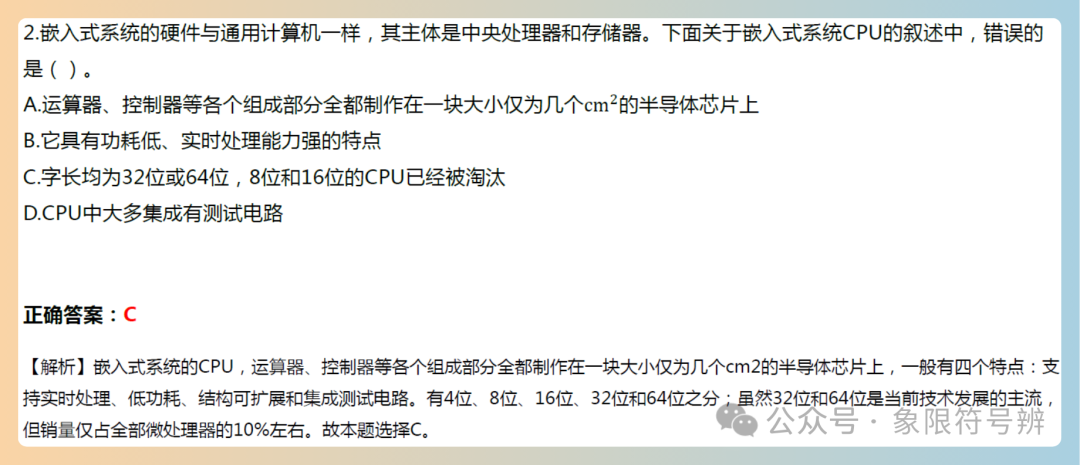
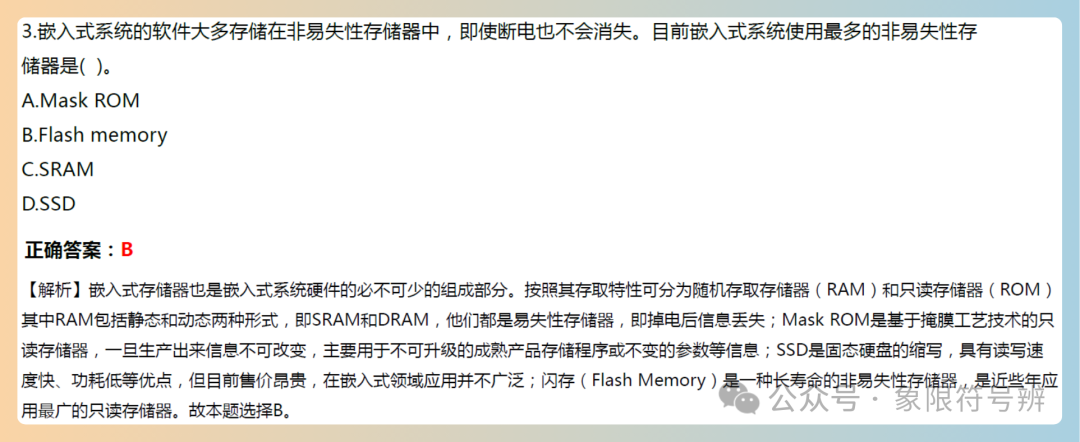
2. Embedded Processing Chips
CPUs in embedded systems generally have four characteristics: support for real-time processing, low power consumption, scalable structure, and integrated testing circuits.
Four types of embedded processing chips:
-
• Microprocessors: Based on CPU word length, microprocessor products are divided into 4-bit, 8-bit, 16-bit, 32-bit, and 64-bit, with products mainly including PowerPC, MC68000, MIPS, AMD, x86. -
• Digital Signal Processors: Digital Signal Processors (DSP) are microprocessors specifically designed for digital signal processing. They have optimized logic structures and instruction systems compared to general-purpose processors, making them better suited for high-speed digital signal processing. The typical application of DSP is shown in the figure below:
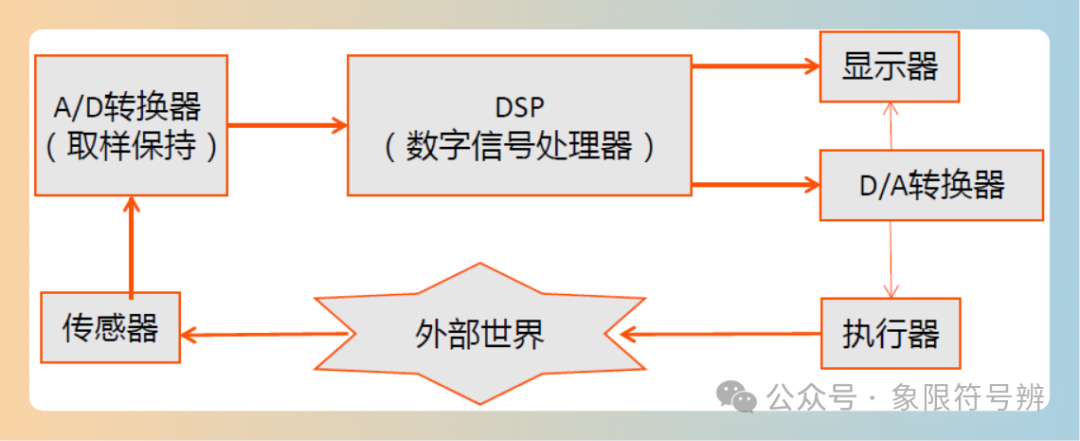
-
• Microcontrollers: A microcontroller is essentially a small computer integrated on a single chip. They operate at low frequencies, have small storage capacities, and very low power consumption. Microcontrollers (MCUs) have evolved through various stages based on the bit count of their processing cores, including 1-bit, 4-bit, 8-bit, 16-bit, and 32-bit. MCUs are diverse and widely used, occupying about 70% of the embedded systems market. Typical components of a microcontroller include oscillators, I/O interfaces, ROM, SRAM, interrupt systems, timers/counters, reset parts, and watchdogs. -
• System on Chip (SoC): Semiconductor processing technology has advanced from microns and sub-microns to deep sub-micron technology at 45nm, 32nm, and 22nm, allowing hundreds of millions or even billions of transistors to be integrated on a single chip. This chip is known as a system on chip; hence, SoC is a product of integrated circuit processing technology entering the deep sub-micron era. Currently, most high-end embedded systems use SoC.
Note:
SoC integrates almost all functions of embedded systems onto a single chip, enabling a single chip to perform multiple functions such as data acquisition, conversion, storage, processing, and input/output.
Sample Questions
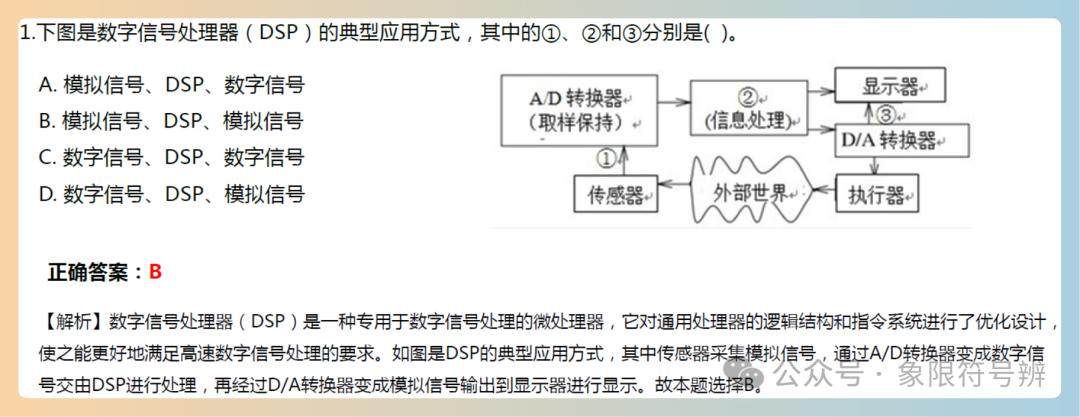
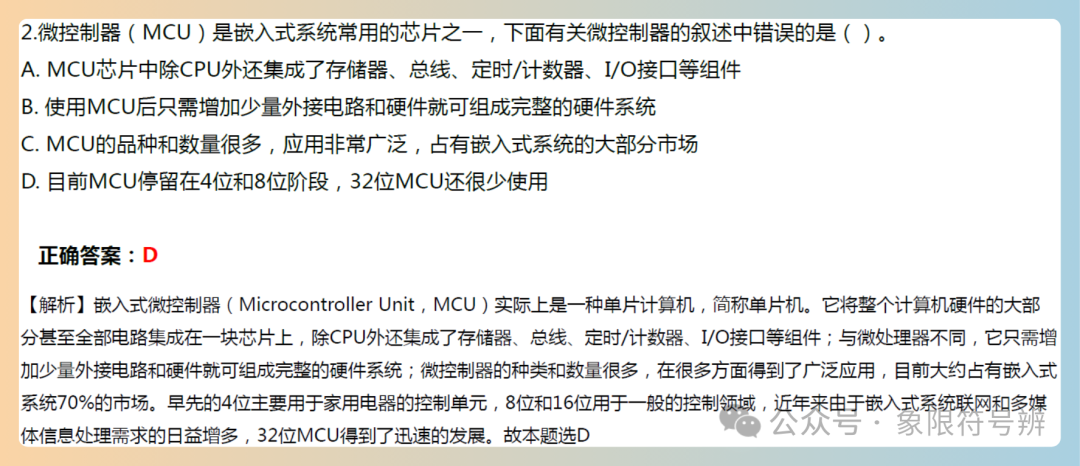
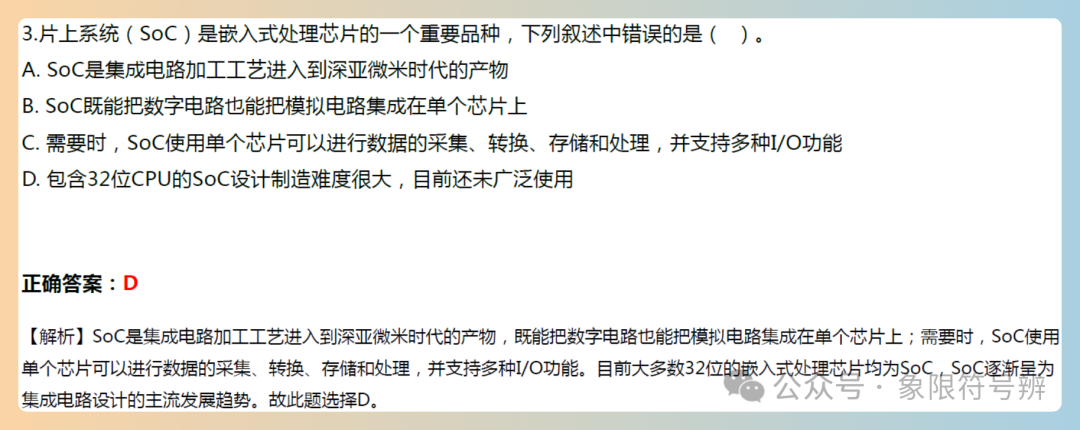
That’s it for this content!
Thank you for reading, and welcome to like, follow, and share
See you next time!
